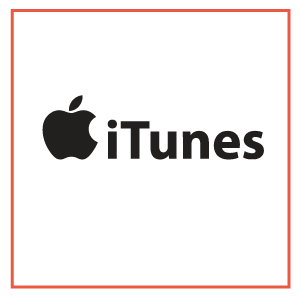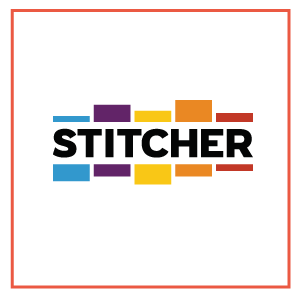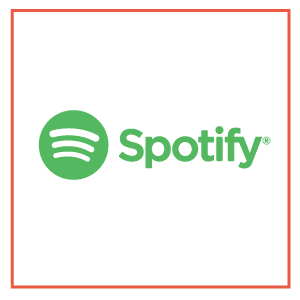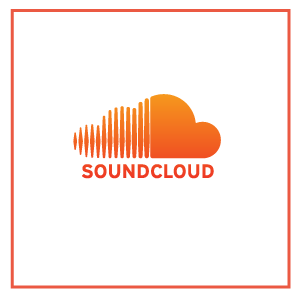Episode 30: Website Design and Development Brisbane
Starting a New Website? - Learn more about Web Design Brisbane here
ALSO LISTEN ON
READ THE TRANSCRIPT OF EPISODE 30 BELOW
[00:00:00] Saul: Hi everybody, and welcome to the Web Design Business Podcast. This is episode number 30. And today's episode is entitled Website Design and Development. My name is Saul Edmonds, and as usual, I'm joined by the lovely Gillian Smith.
[00:00:14] Gillian: Good morning, Saul and Hello, everyone.
[00:00:16] Saul: Hello. We are the co-founders and creative directors of ran has the creative agency, a local business with a passion for helping our clients grow. Over to you, Gil.
[00:00:25] Gillian: Okay, thanks Saul. Well, in today's episode, we will be chatting about website design and development. We hope to provide some helpful information to local business local Brisbane, business owners, start-ups and entrepreneurs to help them on their journey to grow their business online. Of course, if you're not located in Brisbane, Australia, welcome and thanks for stopping by. And we hope you find this information useful.
[00:00:50] Saul: Okay, so what's today's topics, Gil?
[00:00:53] Gillian: Okay, well, today, we're chatting about website design and develop and website design development. And we're going to address the key topic that is what's the difference between web design and web development so a web design and web development the same if he will also talk about the roles and methods and tools that both website designers and web developers use in building a typical website.
[00:01:19] Saul: Okay, so let's get started.
[00:01:20] Gillian: Okay, Saul. The first question is, web design and web development, the same?
[00:01:25] Saul: No, certain simple answers. No, they're not.
[00:01:29] Gillian: Okay, well, let's talk about website design, what are the key roles of a website designer in the process?
[00:01:29] Saul: Okay, so just saying that simple way now is because the role of a website designer can be slightly different depending on the company, but generally, it means that you're responsible for the look and feel, and the user interface and what's referred to the front end of your website, which is essentially what people see, and that's also the anything like calls to action, not they're responsible for their inserting and lying, and designing content that may or may not be made by them might be done by a copywriter or a videographer. They're doing it sometimes. That's also them, but usually not, but they're responsible for the front end, visual look of the website.
[00:02:34] Gillian: Okay, so what tools are used in the website design process?
[00:02:37] Saul: Okay, so people use different sorts of tools like Adobe Photoshop, Adobe Illustrator, Sketch, etc. These are used the layout and design elements within your web pages but then there's other design tools that are also used within the content management system, themselves, also to do that to some of them design tools, but most of them are to lie, and to put things in the right order, with in your page in the header, or the body content, or the footer or anywhere throughout the site.
[00:03:16] Gillian: Okay, what about branding, graphics and logo design? Does that feed into the web design process?
[00:03:23] Saul: Yeah, of course, that's a key part, or it should be anyway, that's in, at least in our agency, that's a key part of what we do anyhow, and we consider that your website is one of your brands, representatives, or suppose you'd say online, and it's a key tool so your branding should be extending into that in the same way that it does with anything else but especially so because it's such an important part of your business.
[00:03:56] Gillian: Okay, website design process, can you take people quickly through what a website design process usually looks like?
[00:04:02] Saul: Okay, so very short, annotated version, is there's the first time and me generally, we preferred, we like to have a meeting, face to face just to go over Skype or sometimes people can only do it on your iPhone and that's okay, too. But just to work out the goals, the scope of the process, even if we've already established Skype, having a first meeting, to rerun over all those points, and also, just to establish who's responsible for what timelines and just reaffirm all those things, then really, the main part of that actually starts will generally have some form of mock up initially, depending on where the content actually comes into it about so I will look to establish that for people, before we start building the site, send that off for approval, and run through that process, and then starting the main build of the site and inserting content and anything else, and then just having the process, the main bulk of that is depending on the level of engagement from the client to or what they need to be involved with can be greater or less in terms of feedback, and otherwise and then at the end of that part, when everything is really approved, then your site is launched. There's testing on our part during the process, but then also afterwards to make sure everything is working, how it should be on the side, any contact forms, but the more complex the project, the more testing generally, we have to do.
[00:04:03] Gillian: Okay, well, so how important is the user experience when it comes to the website design process?
[00:06:08] Saul: Yeah, well, that's a part of website design, as opposed to graphic design is not only the visual part, but it's also the way you actually navigate. Absolutely, this is where it's not just purely visual, that's like a really big pop but that ties in intrinsically to how you navigate and move through your site in a nice, simple, intuitive sort of way that sits well with the visuals, and any calls to action and anything else so that's of utmost importance.
[00:06:43] Gillian: Okay, well, when you're working with a website designer, should you take note of the latest website trends a current trends important?
[00:06:52] Saul: But I guess current trends are important, only in the sense that it's kind of what people expect, as well, expectations aren't necessarily something that people have to make but if somebody, it's fine, saying, trends don't matter. But the reality is that if you've got sites that everybody, including their clients considered to be old fashioned or slightly out of date, then that does have an impact on people's impressions.
[00:07:30] Gillian: like saying, I believe in fled genes. That matter was.
[00:07:35] Saul: Yeah, that's right. People's fashion matters and people's perceptions about that matter, too so you need to take that into consideration but not only that, but that in terms of the world of web design, that actually also means that not only visually, but some of those trends are actually in place, because they've come about as a result of new technologies and new ways to build websites too, so in that sense.
[00:08:08] Gillian: It's not (artificial.)
[00:08:09] Saul: In that sense, it's also important because the function, and new ways to build sites has had an impact on those trends so therefore, that usually means that you're keeping up to date with the current way sites to build and for an improved experience for people everywhere.
[00:08:27] Gillian: Okay, well, let's now turn our focus to website development. So Saul in a nutshell, not just a little bit more than just the know how is web development different from web design? There was some confusion around this.
[00:08:42] Saul: Okay. No, not only kidding. No, but in a nutshell, it's different from web design, because well, you had web design is the front end, and the opposite of the front end, is the back end so that's what people don't see is web development very broadly, usually applies to what people don't actually see. People have to often use code and write code to enhance, or to make certain things work with in the website, certain scripts that you've got two subcategories of web development, you've got front end developers, and back end developers, front end developers, build other user interface and back end developers control server and build things like databases, these are the backend, reside behind the scenes, like I said before, of your website.
[00:09:53] Gillian: So, Saul, now let's just talk about the main roles of a web developer.
[00:09:57] Saul: Okay, so some of the main roles. Like I said, building the user interface so that's different to visually how it looks true which a user like interacts with the website. It's built balancing on both front end developers with languages, and methods like HTML, CSS, and JavaScript, and so on, there's a range of different languages, front end development makes use of styling, JavaScript libraries, and frameworks to speed up this process so the coding and the quality of the code. It's like parts, it's like the components of the engine in your car, somebody's looking at your car, they just see the outside, they see the car performing and driving well, but they don't see the inside, and that's it's a similar sort of thing. Back end, developers create the behind the scenes foundation of your website. They use languages, such as PHP, my SQL, and a range of other different languages and methods to actually create your site, and that and those languages, too. There's really no better or worse, they use for different reasons, but some of them are used by different developers because of the content management systems they use. For example, WordPress is run on PHP, and other people use different languages because of their personal preference for that is because it's what they were, what they learned, and what they know, and what they feel comfortable with what they think is an improved option.
[00:11:55] Gillian: Okay, so well, there's actually another term, which I don't actually know what it means. That's full stack web development, what is the full stack, website development?
[00:12:04] Saul: Okay, so full stack web development, essentially just means they do both the front end and the back end so full stack, this means the usually good all-rounder, and sometimes, really, to be honest, some websites don't need front end and back end.
[00:12:27] Gillian: Okay, so well, in your experience with your many years of professional experience there, what is the best approach when it comes to building a website?
[00:12:38] Saul: Okay, so an integrated web design and build process. I guess, like, is it better to work with separate specialists? So start with a brand designer, then go to website and then go to a web developer? and so on. If everyone works well together? Yeah, it comes back to people just working well together or not. Sometimes that works like a dream. But very broadly, the more separate moving parts you've got, the more things you have to manage. If you do have those different elements like we do in [inaudible] Roundhouse under the same roof, we find generally, that's of great advantage overall, for the end result, smoother process, anything that needs to be addressed can be addressed quickly, and by the one team and in a timely sort of why with years of experience working together. Plus things that people don't often consider is that if you have been doing if someone else has been doing branding, and they don't have a great deal of experience, or like if any, actually building websites, there's a number of things that don't consider, and I can just be about the types of colours they use, or things that may not translate in quite the same way that they had envisioned because they don't have the necessary experience to know that, and you can save yourself a lot of tuning and following if you do those things in house because you've got a good understanding of both print and digital and how they're going to be translated onto websites, and with that in mind, that's actually it for today. Again, guys, thank you so much for listening to a little podcast. Before we go, please don't forget to rate review and subscribe to this podcast. We'd love to hear your feedback. Also, if you'd like to read the transcript of this episode, please visit our website at roundhouse.cc forward slash web-design. We're on a journey to help local Brisbane businesses grow the opportunities online and exceed their goals. Thanks for listening and we'll see you tomorrow. Bye
[00:14:59] Gillian: Bye, guys.








